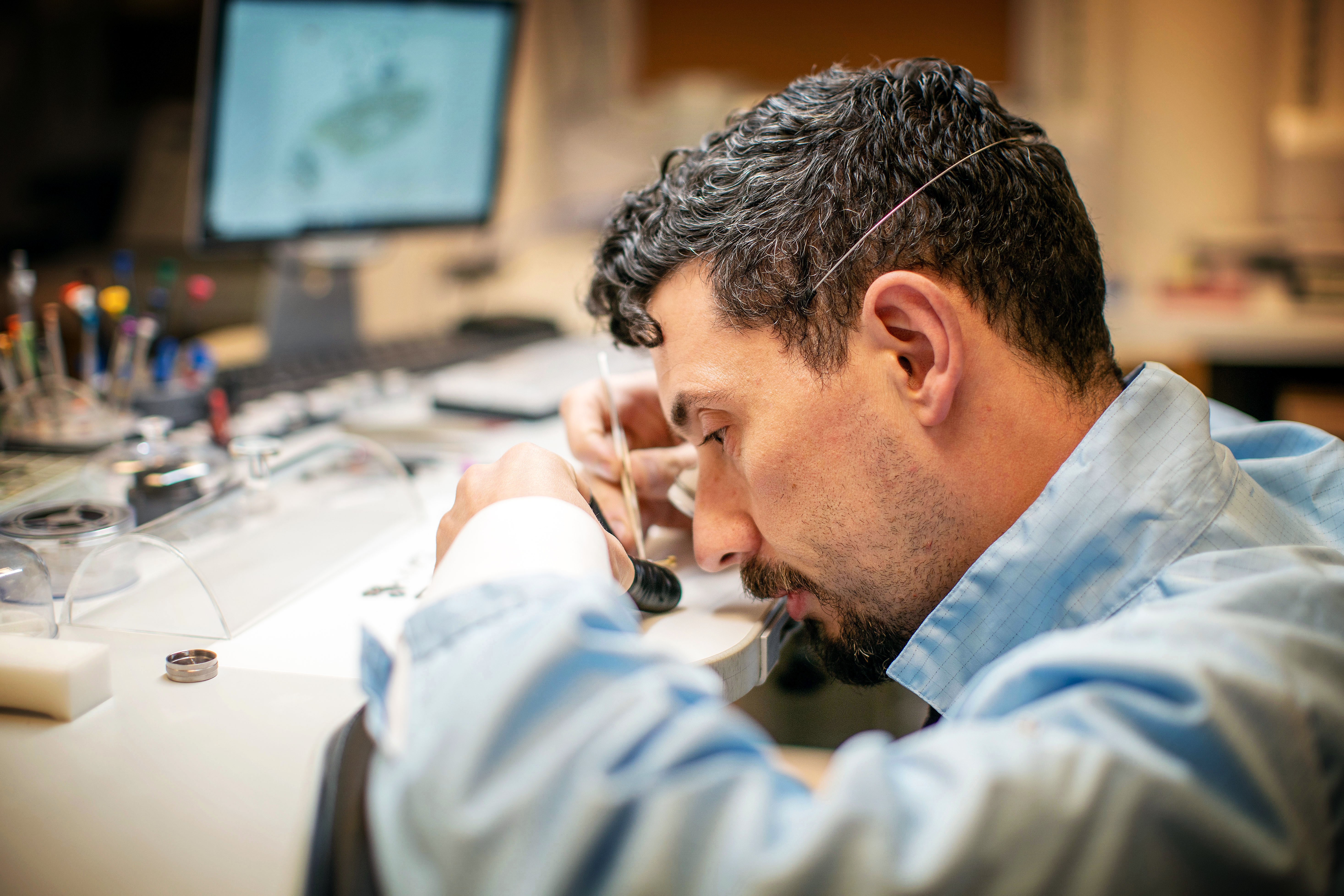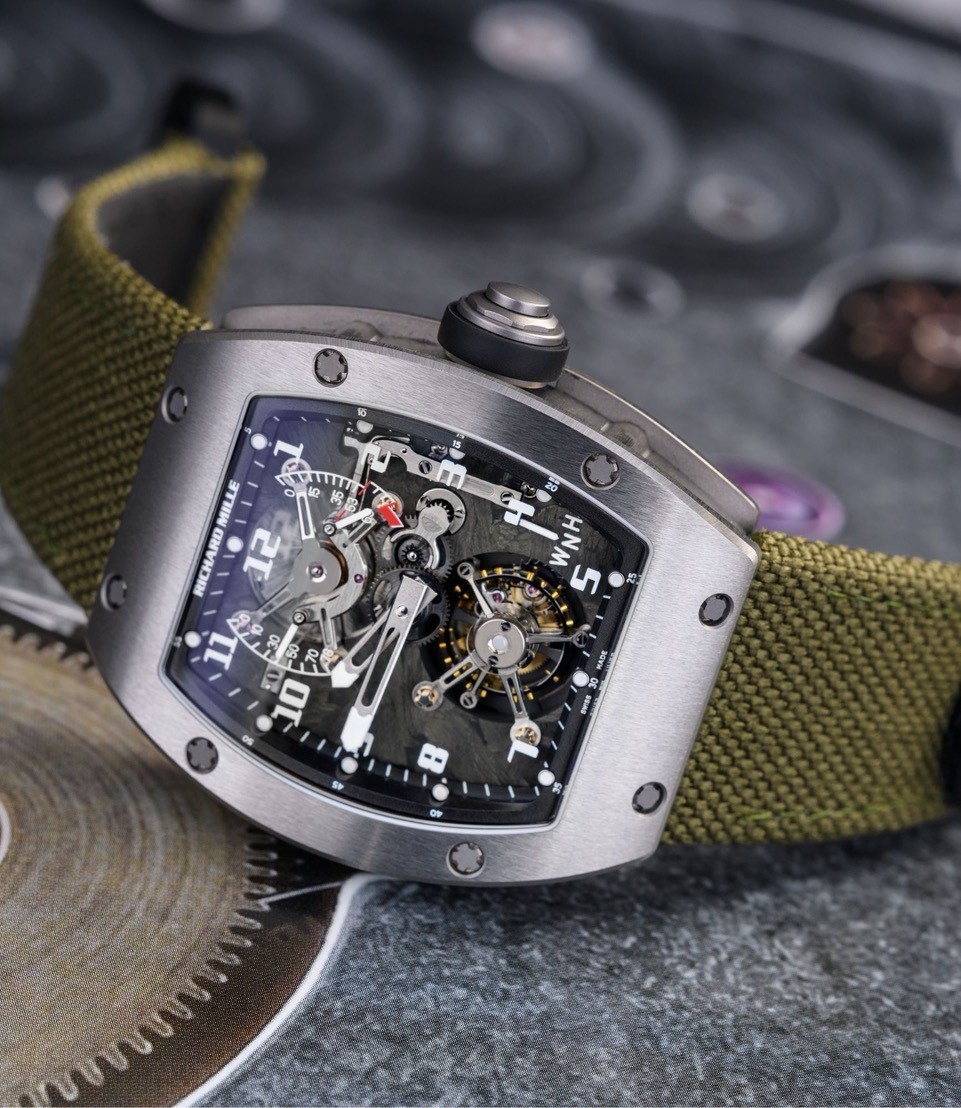You can tell passionate artisans by the pride they take in completing a work or a restoration and how they admit to often being reluctant to let such individual pieces go. Anyone lucky enough to buy a Richard Mille watch from Ninety, the brand’s Mayfair salon for scrupulously restored, pre-owned time pieces, will be glad it has passed through the highly skilled hands of Thomas Mason (pictured), who trained in his craft at Mille’s Swiss HQ and is even qualified to dismantle, repair and rebuild the fiendishly complex tourbillon movement.
The Art of Restoration at Richard Mille’s Mayfair Ninety Salon
20th December 2024
Artisanship excels at Richard Mille’s Mayfair Ninety salon where Thomas Mason, a highly skilled Richard Mille restorer, gives us insight into his meticulous mends.

“I love Mille’s attitude to innovative materials – such as carbon or quartz TPT – however striking but difficult to work with they are,” says Thomas. “They are supposed to be impossible, but we find a way.” Mille produces a little over 5,000 watches a year, compared with Rolex’s estimated one million, and many of those are very limited editions, so Thomas receives a wide variety to restore. “That makes it interesting,” he says. “Each design is very different, every part of it is there for a specific reason and sets a unique challenge for the watchmaker.”
It is hard at first to see why even early models from a brand only 23 years old would be viewed as historic. Still, each style is so individual, and the development of materials and techniques so rapid, that early models – as sought-after as new ones – have a devoted following based on rarity and distinctiveness.

As he works on them over weeks or months, the movement of each watch is completely disassembled, the parts all cleaned, replaced where necessary and polished to perfection even in areas invisible to the owner, and that’s before he even starts on the dial and case. They become, he says, “like my babies, which is why I’m sad yet happy when they’re sold”. He has an encyclopaedic knowledge of the Mille oeuvre, recognising the number each model is assigned, though some have a memorable name too.
The need for his restorative hand is not as dramatic as you might expect. Few suffer the catastrophic squashing that, according to legend, inspired the Cartier Crash, but wear and tear exact a toll – a watch makes many millions of oscillations in its lifetime if it is kept running and being worn, which Thomas firmly believes it should be. “If you keep a watch in its box, it won’t stay pristine because the lubricating oils will thicken and hinder its working when you eventually restart it,” he explains.
Of those currently gleaming from the store’s showcases he has two favourites – the RM 002-V2, an iconic 2005 titanium model with a beautiful satin finish, the power reserve subdial and tourbillon well-balanced visually, and classic Mille numerals, and the majestic RM 018 in ribbed white gold, selling for north of £1.5 million. Only 18 of the latter were completed because of the difficulty of making tiny gearwheels in fragile minerals edged with gold gear teeth.
Restoration is controversial in vintage circles because it can erase authenticity and devalue the item. Thomas explains that he tries to “return the movement to new condition because it will run better for longer if it’s serviced every three to five years. But a little wear on the case is acceptable. It shows the watch has had a life.”





